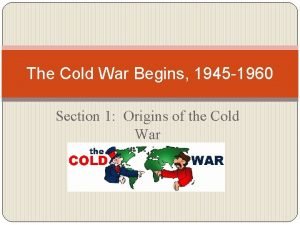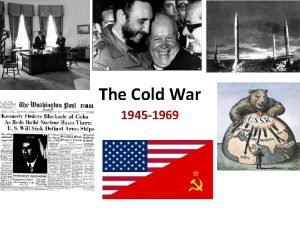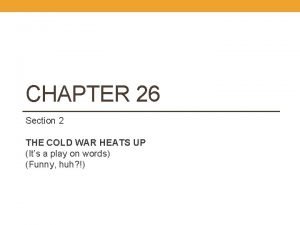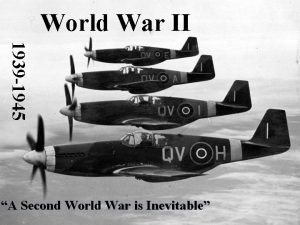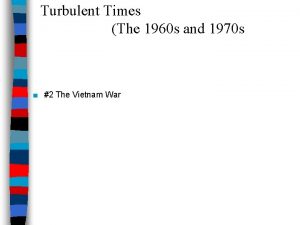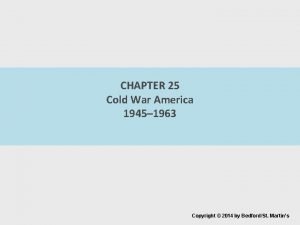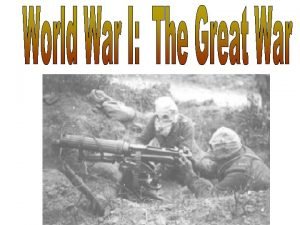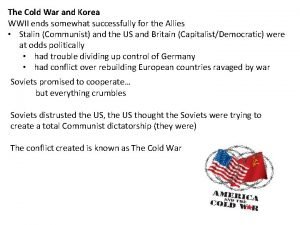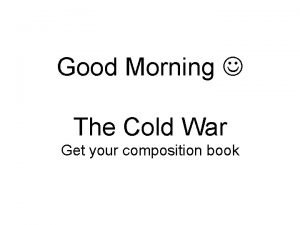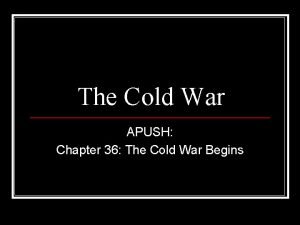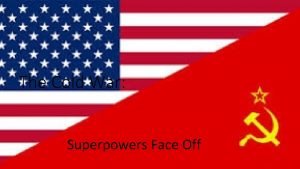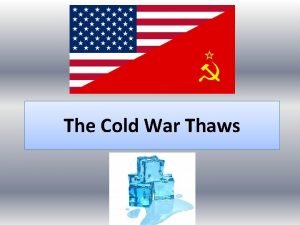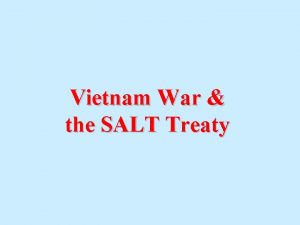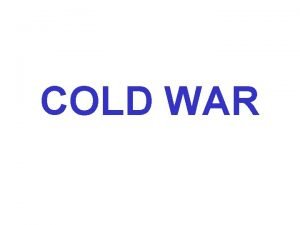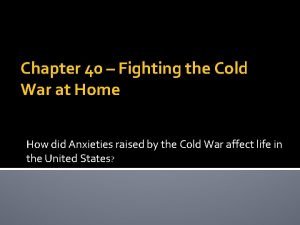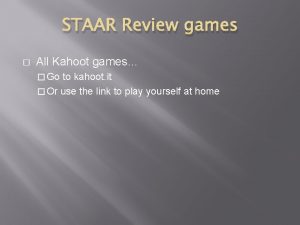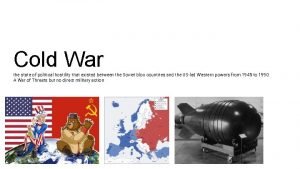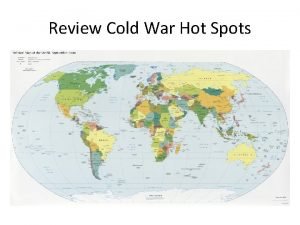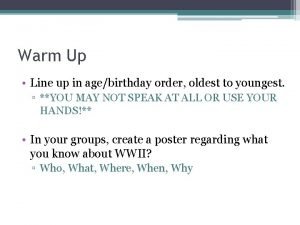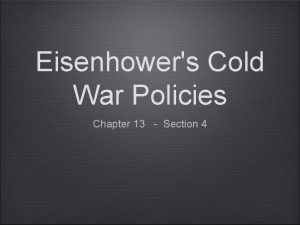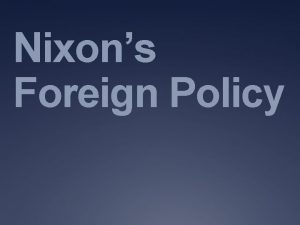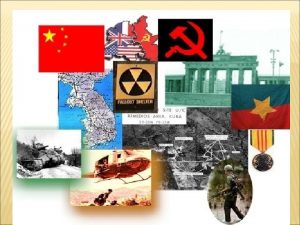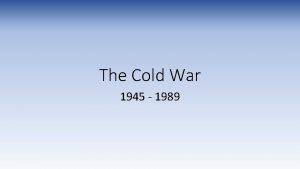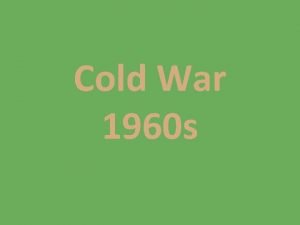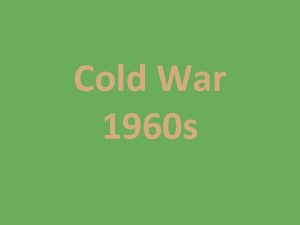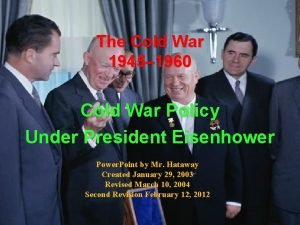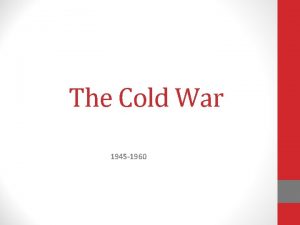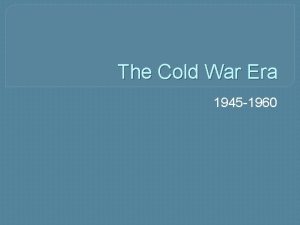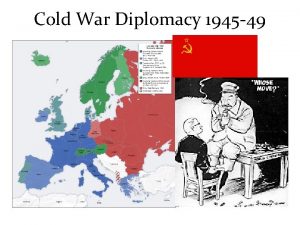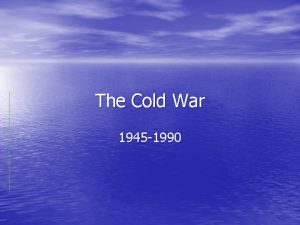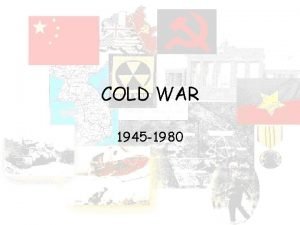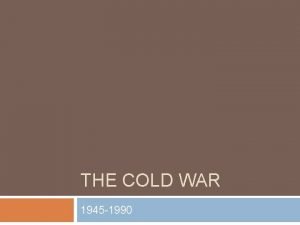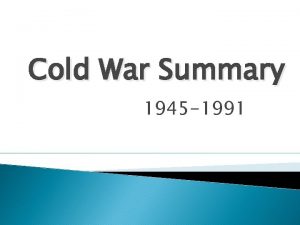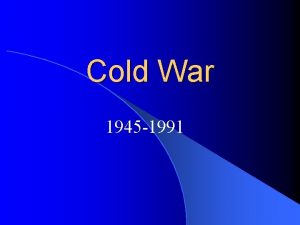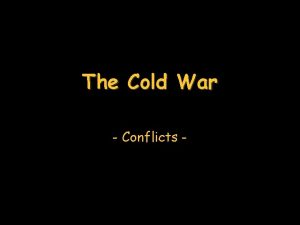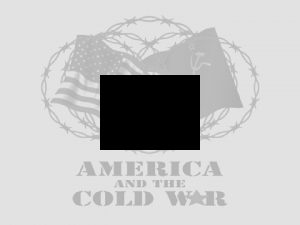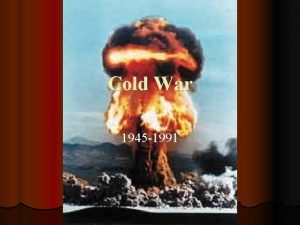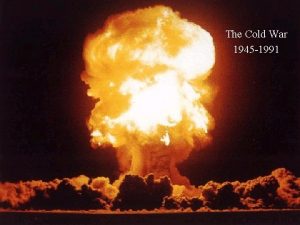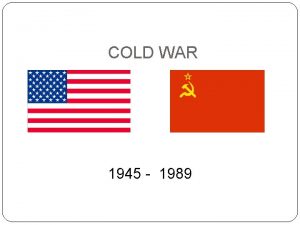The Cold War 1945 1960 Politics 22 nd


























- Slides: 26

The Cold War 1945 -1960

Politics � 22 nd Amendment (1951) Limited president to two terms; or a maximum of 10 years if he, as vice president, assumed the presidency due to the death or departure of a previous president. Largely a conservative move in the face of over 17 years of continuous Democratic rule in the White House (FDR and Truman) FDR was elected 4 times, died just after 4 th term began

Problems after WWII �“Iron Curtain" Speech Winston Churchill, 1946 in Fulton, Missouri Warns of Soviet (Communist) Expansion �Tensions between US and Soviet Union are high �Why would the Soviets be distrusting of U. S. ? �Why would Americans distrust Stalin?

s between US and Soviet Union are high �US did not enter WWII early enough(Too many Russians died) �US didn’t include them in development of atomic bomb �Soviet Union had signed a pact with Hitler before the war to split up Poland �Soviets failed to leave Poland end of war.

US vs. Soviet 1945 -1948 U. S. US wants to extend democracy & protect economic interests in Europe Do this through the creation of United Nations and Aid to vulnerable nations SOVIET UNION Soviets want to extend communism and have “friendly” border nations Soviet Union denies elections, setting up communist governments in Eastern Europe (satellite nations) Many rigged elections with communism winning

U. S. Foreign Policy �Containment Stop communism from spreading �Truman Doctrine Defined US foreign policy for next 20 years • US policy to support democracies in Europe against communist aggression • Used mainly to support Greece & Turkey against communists

U. S. Foreign Policy Continued… �Marshall Plan • Europe is in shambles economically • US pledges $13 Billion to rebuild Europe’s economy • Helps make many European nations “pro-US” • Most money goes to Western Europe • Russia is very angry!

Postwar Germany and Berlin

Conflict and Crisis • Berlin Airlift • Germany divided into occupation zones • US, French, & British combine their areas to form West Germany • Soviets upset; cut off all transportation to Berlin (capital in Soviet zone) • US afraid Berlin will fall to communism, begins airlifting supplies • Airlift lasts for nearly a year before Soviets back down

Conflict and Crisis �Western European Nations and US set up NATO �North Atlantic Treaty Organization �Created April 4, 1949 by 12 nations inc. U. S. , France, Britain, Italy, Belgium, Netherlands, Luxembourg, Denmark, Norway, Portugal, Iceland, and Canada �Collective security organization that essentially warned Moscow that a threat to any of the signatories would be met with force.

Conflict Continued • China falls in 1949 • Civil war after WWII between communists (Mao Zedong) and “democratic forces” (Chang Kaishek) • Communists win in 1949 • US refuses to recognize the Peoples Republic of China ("Red China") • People’s Republic of China not recognized as a permanent Security Council member until 1973.

Atomic Competition �The Hydrogen Bomb ( H-Bomb: 67 times more powerful than A-bomb) �Soviets start developing in 1949, Completes in 1953 �US uses/fully develops in 1952 �Nuclear Arms Race now in full effect

The Korean War 1 st major fighting of the Cold War Soviets controlled N. Korea after WWII, US controls S. Korea (divide was 38 th parallel) • N. Korea uses military aid from Soviets to invade S. Korea in 1950 • The United Nations voted to send military to stop N. Korea (over 90% of troops were US) • UN troops were led by Douglas Mac. Arthur • • • UN troops push N. Korea out of S. Korea • Continue push all the way to the Yalu River (China) • • China enters the war to help N. Korea UN troops are quickly pushed back into S. Korea, with the capitol of Seoul taken.

Korean War Continued • • Mac. Arthur urges Truman to use nuclear weapons on China • Truman is afraid of WWIII (Soviets would help) • Mac. Arthur’s idea is rejected Mac. Arthur goes behind Truman’s back, continues push for war • Contacts Congressmen & Newspapers Truman fires Mac. Arthur UN forces recapture Seoul; trench warfare ensues around 38 th parallel • Soviets suggest a cease-fire in June, 1951 • • Demilitarized zone created at 38 th parallel • Treaty takes 2 years to complete (July, 1953) • Armistice still in effect today War is viewed as unsuccessful in US • 54, 000 US soldiers killed • $67 Billion War debt • Truman loses support of US public

Cold War at Home • • US fears of communism grow (2 nd Red Scare) Truman sets up Federal Employees Loyalty Program • 3. 2 million Americans investigated from 1947 -51 • House Un-American Activities Committee (HUAC) • Investigated communist influence in movie industry • Hollywood Ten – actors who didn’t testify/cooperate; there were sent to prison • Hollywood begins blacklisting people who they thought were communists

Brinksmanship �Sec. of State John Dulles argues that only by going to the “brink of war “ can you deter aggression. �Brinksmanship • US and Soviets build up military/nuclear capabilities • leads us to brink of war w/ Soviet Union in 1962 during the Cuban missile crisis. �Widespread fear in the US of a nuclear attack • Bomb shelters built in backyards • Air raids practiced at school (Hide under your desks, it will protect you!)



Red Scare-Spy Cases State Dept. agent Alger Hiss is accused of spying • Soviet defector accuses Hiss of helping Soviets • Charges pursued by Congressman Richard Nixon • Hiss Convicted of perjury • Soviets explode an atomic bomb in 1949 • US certain Soviets had spies and traitors here • Physicist Klaus Fuchs admitted in 1950 to helping Soviets • Fuchs says Ethel & Julius Rosenberg helped • Rosenbergs plead 5 th Amendment • Both found guilty of treason and sentenced to death • Executed in 1953 •

Mc. Carthyism • • • Wisconsin Senator Joseph Mc. Carthy used issue of communism to win re-election Played on American fears Claims communists were taking over gov’t • Said he had names of communists in State Department • Also said communists were in US Army Mc. Carthy never produces any names He is discredited and censured by Congress for his actions In 1953 the Crucible play was written as a criticism of the “witch hunt” tactics of Mc. Carthyism.


Cold War (Globally) • • • US uses CIA and spies to gather info and conduct covert operations • Included operations in Iran, Guatemala, etc. Soviets create Warsaw Pact in 1955 of Eastern European nations • In response to West Germany entering NATO Egyptian conflict in 1955 over Suez canal Eisenhower Doctrine issued in 1957 • US would defend Middle East from communism • Will not allow Soviets to control most of worlds oil supply Hungarian Revolts in 1956 • Hungary pushes for democracy- call for free elections • Soviets respond by sending in troops and tanks • 30, 000 Hungarians killed

Cold War Competition • Soviets launch 1 st satellite in 1957 • Sputnik • US is alarmed and begins focusing on own space program – NASA is created. • US launches their 1 st satellite in 1958 • April 1961 Soviets put 1 st man in space • 3 weeks later John Glenn is 1 st American in space

Spy Planes and Espionage President Eisenhower & Khrushchev were to have a summit in 1960 to ease tensions US makes secret flights over Soviet Union U-2 plane used to take spy photos of troop and missile movement. American U-2 plane is shot down and pilot Gary Powers is captured. Eisenhower denies at first, then forced to admit flights. Soviets demand apology and Khrushchev calls off summit. Tensions remain high with great distrust and suspicion on both sides.


 The cold war begins 1945-1960
The cold war begins 1945-1960 The cold war begins lesson 1
The cold war begins lesson 1 The cold war heats up: 1945 - 1969
The cold war heats up: 1945 - 1969 Chapter 26 section 2 the cold war heats up
Chapter 26 section 2 the cold war heats up Cold war proxy wars
Cold war proxy wars 1945 world war ii
1945 world war ii 1945 world war
1945 world war Vietnam war 1960
Vietnam war 1960 Chapter 25 cold war america
Chapter 25 cold war america Cold war conflict
Cold war conflict Neutral countries in cold war
Neutral countries in cold war Effects of cold war
Effects of cold war Ch 36 apush
Ch 36 apush Superpowers cold war
Superpowers cold war Soviet union acrostic poem
Soviet union acrostic poem What does salt stand for cold war
What does salt stand for cold war What was the reason for the cold war
What was the reason for the cold war Chapter 40 fighting the cold war at home
Chapter 40 fighting the cold war at home Cold war knowledge organiser
Cold war knowledge organiser Staar review games
Staar review games Warsaw pact definition cold war
Warsaw pact definition cold war Cold war hot spots
Cold war hot spots The cold war acrostic poem
The cold war acrostic poem Cold war victory
Cold war victory Vietnamization definition cold war
Vietnamization definition cold war Communism cold war
Communism cold war Cold war mikhail gorbachev
Cold war mikhail gorbachev
